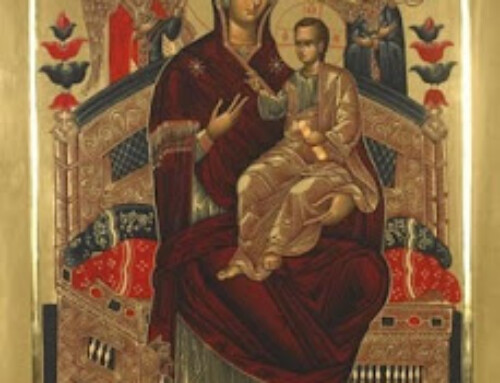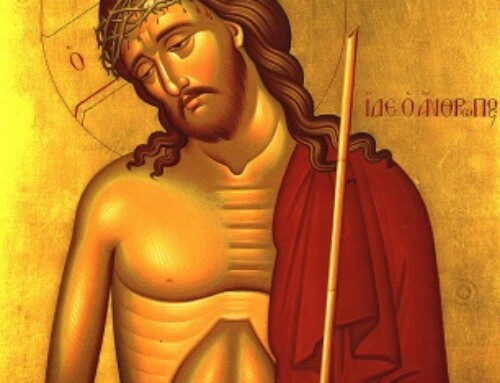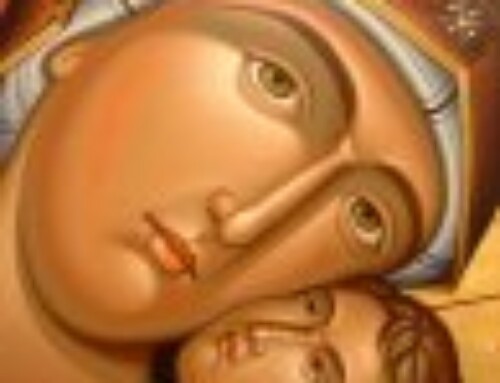Word Magazine April 1989 Page 19-20
CHURCH PRACTICE IN THE HOME
by Mark Vranes
Every educator knows that in order for learning to occur it must be continuous. Teachers and parents do not, for instance, teach their children reading, writing, and ‘rithmetic lessons only once, nor do they prepare them to receive Holy Communion once or twice a year and expect them to grow learning and discerning what our Lord’s Body and Blood is — a lesson taught once a year teaches nothing. So that maximum learning can take place, lessons must be continuous, even repetitive. The Church’s customs and practices are repetitive.
Perhaps nowhere else is continuity more important than in the Orthodox Christian home. Every day, especially Sunday, takes on its own special significance and rhythm from a certain day in the life of the liturgical calendar to another. Take the Feast of Pentecost for instance. On this day the church begins its movement towards Great Lent, which moves towards Pascha, which, in turn, leads once more to Ascension and then 10 days later to Pentecost. If it appears to be cyclical, that is only because it is and should “forever” remain that way. Sad to say, however, this movement, this continual progression, is neither seen nor lived in its fullness in the home.
The liturgical year of the Church is not limited to solely Pascha and the Nativity of the Lord in the Flesh, Christmas. These days take on an added significance when they are celebrated in their proper context, within the church’s liturgical life.
The Orthodox Church has an incredibly rich liturgical life. This is best illustrated in its beautiful Festal cycle, the celebration of the Church’s Twelve Great Feast Days, eight of which commemorate an event from the life of Christ, while the remaining four bring to mind a past event in the life of the Theotokos. Unfortunately, the proper understanding of what these days are is certainly not what it should be. Slowly but surely, it seems as if these feast days — and please, let’s not refer to them as ‘holidays’ any longer — are being lost. The empty churches indicate as much. We pastors and parents cannot allow this to happen any longer. It is imperative that these festivals be restored to the home and the Church.
Primarily by reading the liturgical texts, along with the Gospel and Epistle reading for the day, and, of course, by partaking of the Eucharist, their meanings can be better and more fully appreciated. Parents should ask their parish priest where the proper liturgical books which contain the Vesperal stikhera and apostikha verses, in addition to the troparion and kontakion, can be located. Because of the limited time church school programs allow for, the restoration of the feasts’ true meaning can be uncovered best in the home. And with it, hopefully, continuity will bind the Christian family more closely together.
In order for our Orthodox children to become aware of these feasts, a couple of practical suggestions are in order:
1) If possible, an icon of the respective feast day should be placed in the icon corner, the place in the Christian home where the votive light is hung and the family gathers for prayer. The festal icon remains there during the normal eight-day post-feast. There are a few exceptions. Two come immediately to mind: a) the icon of the Resurrection is kept in the icon corner for 40 days, being replaced on the Wednesday evening before the Feast of the Ascension and b) the Feast of the Annunciation (March 25). Because it normally falls during Great Lent, at a time where there is no feasting, only fasting, the Annunciation icon is replaced after the one-day celebration of this feast. Paper icons of the Twelve Feasts are available at a modest price; just check with your parish priest for a place to buy them.
2) The liturgical texts, especially the troparion and kontakion, should be read before the icon on the eve and on the morning of the feast.
3) Although rather expensive ($35 for hard cover, $22.50 for soft), The Meaning of Icons (St. Vladimir’s Seminary Press) by Louis Ouspensky and Vladimir Lossky is an immensely valuable educational tool in putting forth and explaining the theology of the festal icons. It can be purchased from St. Vladimir’s Seminary Bookstore, 575 Scarsdale Road, Crestwood, New York 10707.
4) On the feast day itself, and during the post-feast, the troparion should replace ‘Our Father . . .’ before all meals, while the kontakion should be sung in place of the customary thanksgiving prayers, after meals.
What is vitally important for parents to keep firmly in mind is the need for their children to be directly involved in as many of these activities as possible. It should be the children — and not the parents — who replace the festal icons; it should be the child who carefully lights the candle; and it should be the children, and again not the parents, who read and even find the proper texts and associate them with people, places, and events of the icon. It is a well known fact that children have a much higher retention level when they discover the information on their own as opposed to having it told to them. Studies have shown the retention ratio to be about 50-10 percent.
Another way in which this continuity in the home can possibly become even tighter is to use the sanctoral cycle, the daily commemoration of the saints, as a teaching tool. For instance, when a child’s patron saint’s day is approaching, reading material should be made available. The child can then report to the rest of the family what he or she learned. The child should even be encouraged, but not forced, to chant/sing/say the troparion before dinner on that particular day. Of course, the person whose name’s day it is, should, if not possible on the exact day because of school but certainly on the closest Sunday thereafter, attend Divine Liturgy and receive the Sacraments of Confession and Holy Communion. Again, your parish priest should be more than willing to help provide the proper information, along with suggesting family activities during Advent which can be found in many Christian education publications from the Orthodox Christian Education Commission.
In a further effort to maintain continuity, full advantage of the secular holidays should be taken. For instance, a good talk on Labor Day is to present the Biblical view on earthly possessions or stewardship. We Christians are merely stewards. We owe to God everything we have and must share it.
Every American history class praises the honesty of Abraham Lincoln. When his birthday falls in February, a family discussion on this virtue along with that of trust can take place. We must find heroes whenever we can. There are too few. A good occasion for these talks to take place is while eating dinner. The evangelist Luke recorded many instances in which Christ taught his disciples ‘at table.’
On Mother’s and Father’s Days, children can perhaps be made to recall an incident in which they didn’t love their parents, along with examples when they did. On Memorial Day, those who died in battle are remembered. A connection with the Orthodox practice of memorial Saturdays during Great Lent can certainly be made. The opportunity to teach children about memorial prayers for the dead should not be overlooked either. Again, good family practice for Thanksgiving is to have each family member say aloud what he is thankful for. Every person can find something for which to thank God.
As is easily seen, many topics can be chosen. Many themes can be developed. In short, many things can be done and should be done in order to insure continuous learning. Simply put, the Church calendar must be lived. Not to take full advantage of the days the Church gives us, in fact, will surely prevent, if not quite possibly destroy Christian continuity in the home. Choose what you and your family can do and stay with it. There is enough to choose from!




